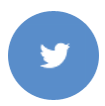(a) Studying results

I obtained several bumble-bee (Bombus terrestris dalmatinus) colonies, for every single which has 30forty pros, out-of Koppert Physiological Options (Berkel durante Rodenrijs, The netherlands). The specialists was basically exclusively noted on thorax that have designated women puerto rican, colored labels (Opalith tags; Religious Graze Kg, Germany). Which greeting individuals to getting correctly known both in lab discovering tests and you may field foraging examples.
New bees was indeed pre-taught to forage out of 20 bicoloured, blue and you will red-colored, fake flowers from inside the a laboratory trip stadium. The fresh rectangular, bicoloured vegetation were constructed from two halves (for each twelve?24 mm): one to reddish (Perspex Reddish 260) plus the other blue (Perspex Blue 727). During pre-studies, every bicoloured herbs were rewarded that have fifty% (w/w) sucrose services providing previously along with-unsuspecting bees which have an equal chance to user each other colors having prize (Raine et al. 2006b). Bees completing at the least five straight foraging bouts towards the bicoloured vegetation was basically chosen to own studies. Such foragers have been instructed physically, when you look at the a trip stadium that has had ten blue (Perspex Blue 727) and you will 10 red-colored (Perspex Yellow 260) fake plant life (for every single 24?24 mm). Reddish vegetation had been fulfilling (for each contained fifteen ?l off 50% (w/w) sucrose provider), while you are bluish flowers was in fact blank (unrewarding). Bees was basically regarded as choosing a rose after they both contacted (inspected) otherwise arrived involved. Getting towards the a flower failed to fundamentally end in a serving (probing) skills. Ergo, before probing an advisable (yellow) rose, bees you will definitely like one another reddish/fulfilling otherwise bluish/unrewarding plant life from the dealing with or landing on them (in the place of probing). Going for a yellow (rewarding) flower is actually regarded as correct’, when you’re opting for a bluish (unrewarding) flower was considered as an enthusiastic error’. We registered the option series produced by for every single bee throughout the time it earliest registered the newest airline stadium. Recording the new flower alternatives for for every single bee ceased immediately following it got produced 99 rose alternatives following the first time it probed an excellent satisfying (yellow) rose (Raine et al. 2006b). Hence, for every single bee generated no less than 100 rose choice, like the very first time it probed a worthwhile flower, along with people options created before this earliest probing experiences.
Plants was indeed altered as well as their ranking lso are-randomized between foraging bouts to stop bees using odor scratching or earlier in the day flower ranks because the predictors of reward. Rose tones was in fact chose to ensure bees must defeat their good, unlearned liking having bluish, before accompanying certainly one of their innately minimum preferred colors (yellow) which have prize (Chittka et al. 2004; Raine et al. 2006a). Fifteen bees was indeed educated regarding each colony (i.age. 180 bees overall) between cuatro and . Thorax thickness specifications were drawn for every single of them bees as the a measure of body dimensions. Controlled light for research tests are provided with large-frequency fluorescent bulbs (TMS 24F lights that have 4.step three kHz ballasts (Philips, The netherlands) fitted which have Activa daylight hoses (Osram, Germany)) so you’re able to simulate pure daylight above the bee flicker combo frequency.
(b) Learning shape
The starting point for each bee’s learning curve was the proportion of errors made (blue flowers chosen) before the bee first probed a rewarding (yellow) flower. For bees making fewer than five flower choices (either by approaching or landing on them) before probing a rewarding flower (n=53), we used the colony mean proportion of errors (calculated from bees making five or more such choices). Flower choices made by each bee after (and including) the first time it probed a rewarding (yellow) flower were evaluated as the number of errors (blue flowers chosen) in each group of 10 choices. Learning curves (first-order exponential decay functions: y=y0+Ae ?x/t ) were fitted to these 11 data points (i.e. the start pointing and subsequent 10 groups of 10 flower choices) for each individual bee, using Microcal Origin (Chittka et al. 2004; Raine et al. 2006b), to capture the dynamic nature of the learning process. Here, x is the number of flower choices the bee made, starting with the first time it probed a yellow flower, and y is the number of errors. The saturation performance level (y0) is the number of errors made by a bee after finishing the learning process, i.e. when reaching a performance plateau. The decay constant (t) is a measure of learning speed: high values of t correspond to slow learning, whereas lower t values indicate faster learners. A is the curve amplitude: the maximum displacement (height) of the curve above y0. Both amplitude (A) and saturation performance (y0) were constrained between 0 and 10 for curve fitting. Eight (out of 180) bees showed no appreciable improvement in performance during the task, and the software generated learning curves’ that were essentially horizontal lines. These bees were excluded from subsequent analyses because their t values were either very high (>400) or negative.






